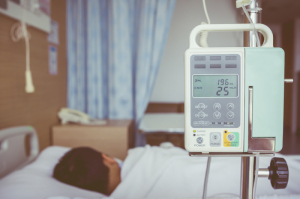by
John W. Mitchell, Senior Correspondent | February 20, 2017
Findings from a multi-hospital white paper study to be released at HIMSS demonstrate that potentially catastrophic dosing errors (PCDE) are sharply reduced with an integrated pump dosing solution. ICU Medical Inc., which conducted the study, found a 52 percent decrease in PCDE and a 156 percent increase in participation in drug library (dosing) compliance when such systems are installed.
"Human error associated with inaccurate medication, dose, concentration, and incorrect patient are common errors found in health care," Candida Arvelo, MBS, BSN, clinical director, Integration at ICU Medical Inc. told HCB News. "Synergies between infusion device safety software and EMR/CPOE systems significantly reduce the risk of these errors by ensuring accurate order transfer and a checkpoint with infusion safety software, intended to mitigate human error. "
The study was conducted at three community hospitals ranging from 50 to 350 beds. The facilities had installed ICU Medical's smart infusions system and medication safety software products. The average installation cost, according to Arvelo, is about $120,000 per hospital, plus some licensing fees. While these technologies have been around for a while, implementation has been slow.
"The greatest barrier to adoption has been the slow uptake of awareness of this technology among clinical leaders. There has also been very little published on outcomes associated with adoption, or cost benefits that will support adoption," said Arvelo.
The study reviewed more than half a million programing sequences. The primary outcome showed the impact of clinical integration of infusion devices with the EMR on reducing serious, preventable medication errors. All three metrics — incidence rate, compliance, and variability of severity — improved at each individual hospital. There was also a large and statistically significant reduction in the variability in the severity of individual PCDEs
When analyzing data month by month over the study period, the reduction in PCDEs clearly pivoted around the "go-live" date of ICU Medical's client hospitals, and is sustained after integration. The clinical team that conducted the study included a doctor of pharmacy and a medical doctor.
According to Arvelo, reducing medication errors is not only safer for patients, but offers several operating advantages. These include:
- Reduction of factors that increase patient length of stay, medication costs and liability risk.
- More accuracy in capturing accurate billing for infusion stop and start times.
- Auto-documentation of infusion delivery reduces documentation time for bedside clinicians. Increased time at the bedside has been associated in the literature with improved patient outcomes and decreased length of stay.
- Significant decrease in infusion therapy clinical practice variability, and better documentation in medical recording.
